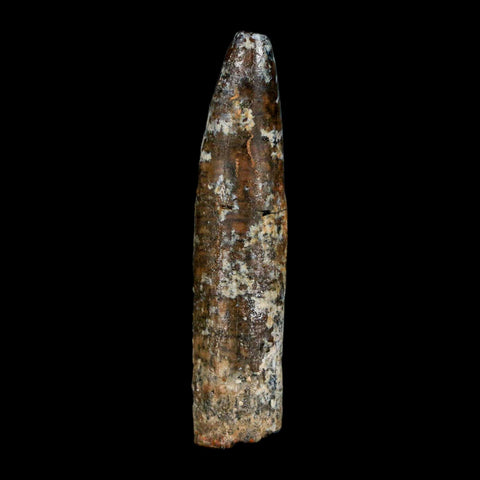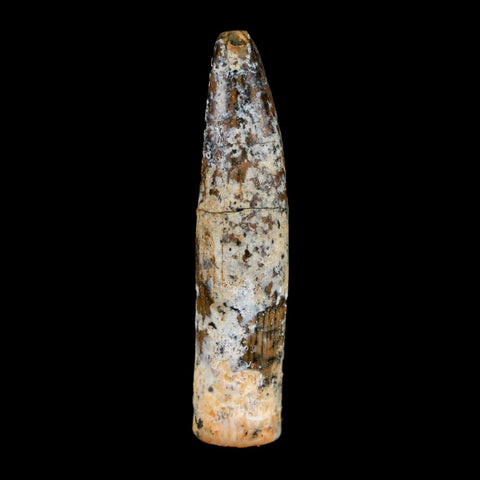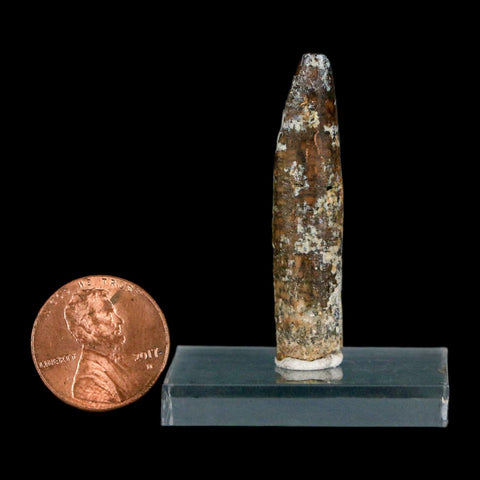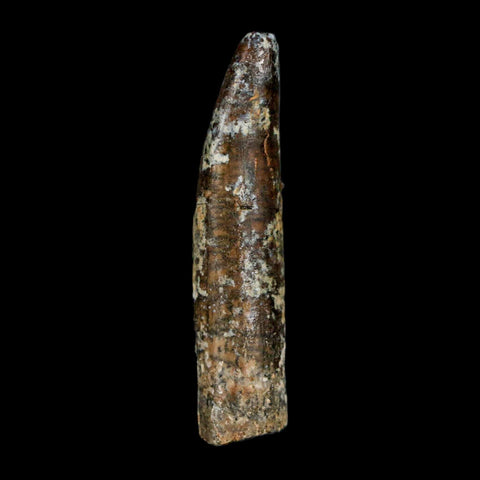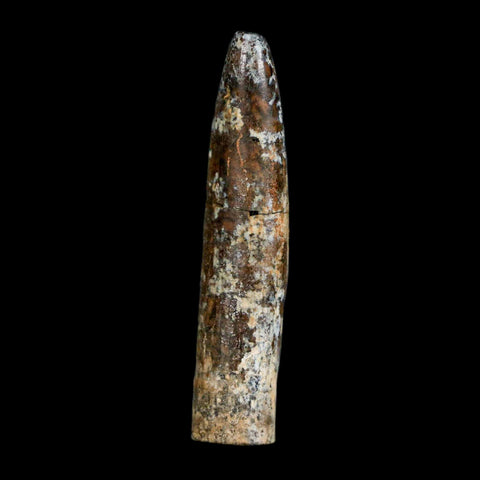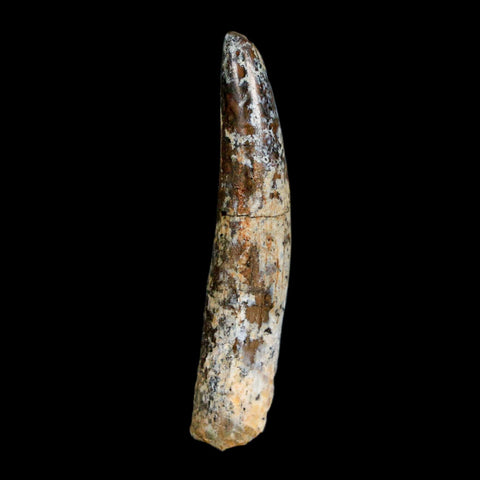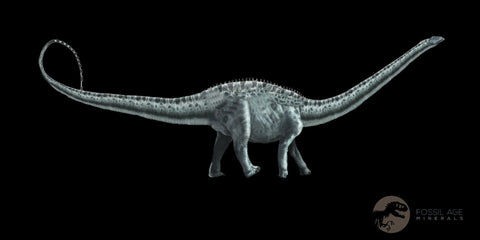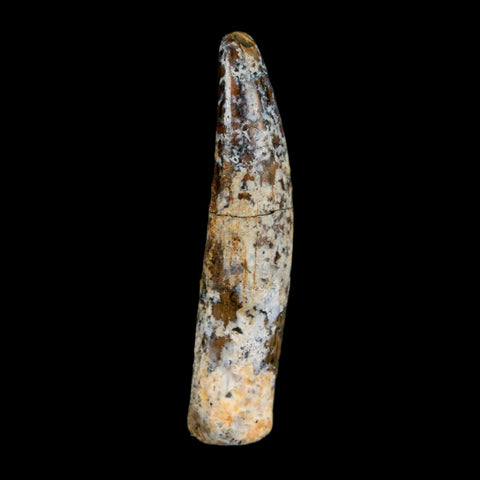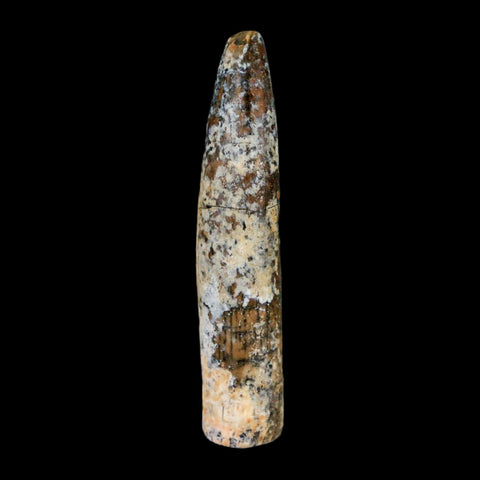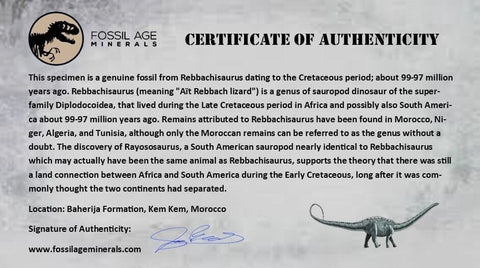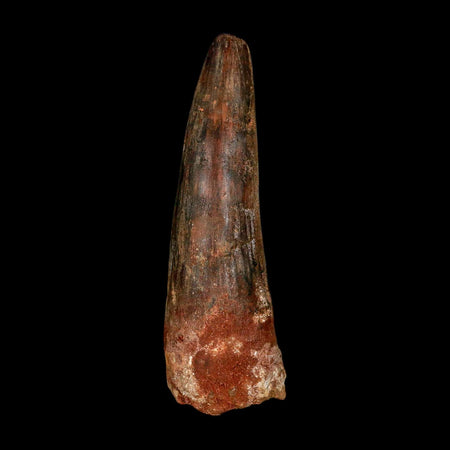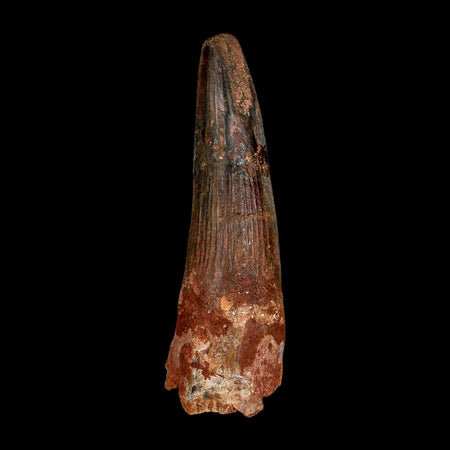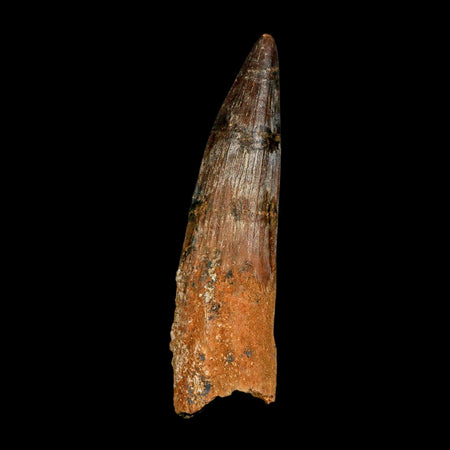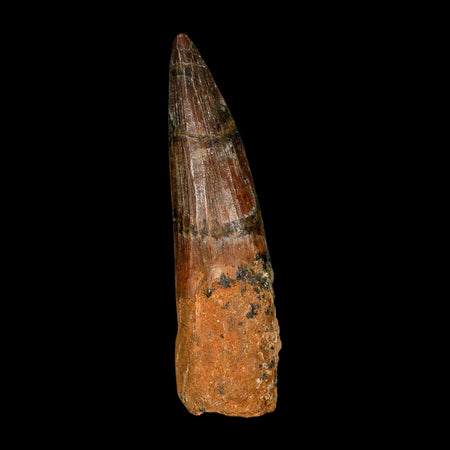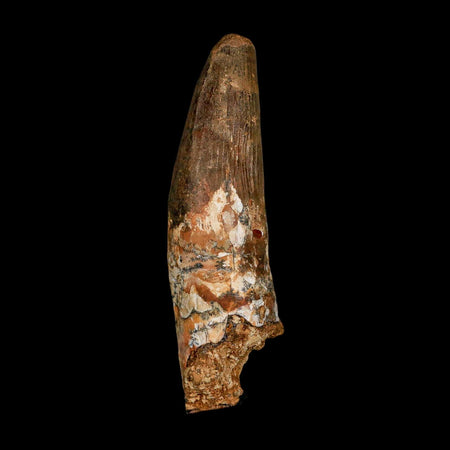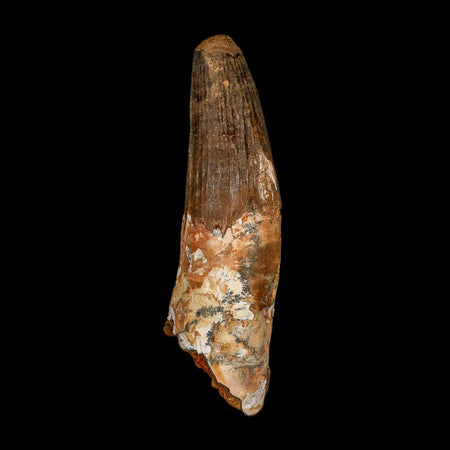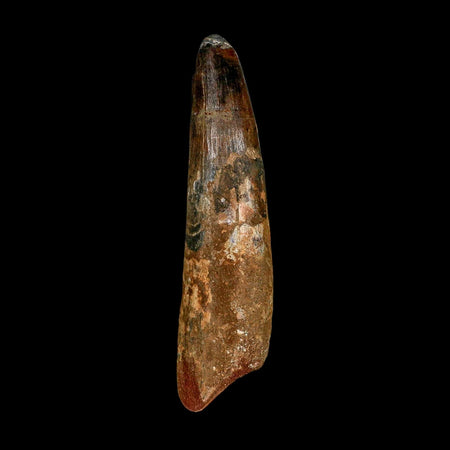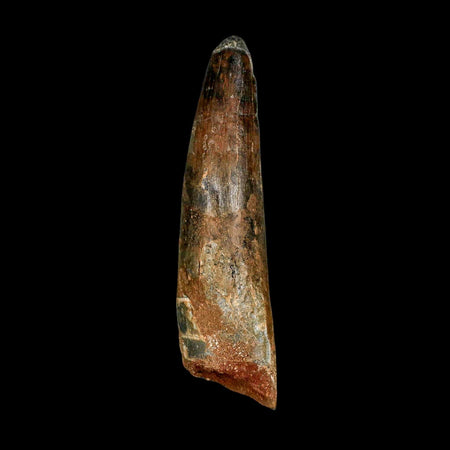1.7" Rebbachisaurus Sauropod Fossil Tooth Early Cretaceous Dinosaur COA, Display
Location: Baherija Formation, Kem Kem, Morocco
Weight: 0.3 Ounces
Dimensions: 1.7 Inches Long, 0.4 Inches Wide, 0.3 Inches Thick
Comes with a Free Display.
Comes with a Certificate of Authenticity.
The item pictured is the one you will receive.
Early Cretaceous, 97-99 million years old.
Rebbachisaurus, meaning "Aït Rebbach lizard," represents a fascinating genus of sauropod dinosaur within the Diplodocoidea superfamily that roamed Africa and possibly South America during the Late Cretaceous, around 99 to 97 million years ago. Fossils attributed to this dinosaur have been uncovered in Morocco, Niger, Algeria, and Tunisia, with Moroccan finds confidently identified as Rebbachisaurus. The striking similarity between Rebbachisaurus and the South American Rayososaurus—potentially the same species—strongly suggests a land connection between Africa and South America during the Early Cretaceous, challenging long-held beliefs about continental separation. This rare fossil tooth offers a compelling glimpse into prehistoric life and continental history, making it a must-have for serious collectors.
In 2010, Gregory S. Paul estimated Rebbachisaurus at 14 meters (46 ft) and 7 metric tons (7.7 short tons). It possessed a small head, a long, graceful neck, and a whiplike tail. Rebbachisaurus is distinguished from other sauropods by its unusually tall, ridged back and the spine or sail that lay atop its back, distinguished by the tall ridges of the preserved dorsal vertebrae of the holotype and other specimens.

Please be aware of the nature of fossils:
Being buried under the ground for millions of years under tons of pressure tends to be rough. No fossil comes out of the ground whole and perfect. Most fossils have undergone some restoration, while others are altered by man simply to enhance their presentation in different ways. The workers in Morocco do a very professional job of unearthing and preserving these natural treasures; however, commonly, natural cracks are visible on the surface. These are part of the natural beauty of the fossil and are not considered defects.


